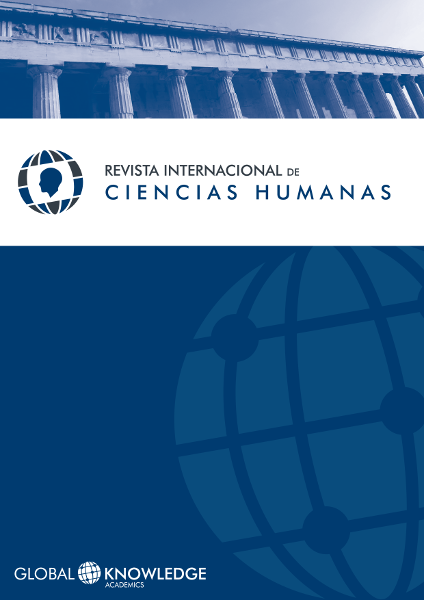Semiotic Analysis of the Film Black God, White Devil (1964), directed by Glauber Rocha
Keywords:
Glauber Rocha, semiotics, symbolic spaces, God and the Dev il in the Land of the Sun, Collective ImaginaryAbstract
In 1964, Glauber Rocha wrote and directed a movie “Black God, White Devil”. It was in the same year that Brazil suffered military coup. At that time, talks about politics or social problems were a messy affair due to the strong threat of repression. This film communicates the dichotomy between good and evil, cultured and uncultured, order and disorder, social differences, the symbolic constructions of space as semiosfera, the borders and chaos. For the director, religion is closely related to politics. It is stated the desire for power between the political-social (interest of landowners on workers) and religious (interest of preachers over believers). This analysis runs on such symbolic dualities, paying attention to the semiotic discussion by theorists such as Yuri Lotman, Michael Foucault, Mijaíl Bajtín, Umberto Eco, among others. The article intention is to examine how Glauber Rocha constructed the symbolic spaces along its film, and to understand the critical message that he provides.
References
Bajtín, M. (1998). La cultura popular en la Edad Media y en el Renacimiento: el contexto de François Rabelais. Madrid: Alianza.
Benveniste, E. (1969). Sémiologie de la langue (2). Semiótica, 1 (2), p. 130.
Carmona, R. (1993). Cómo se comenta un texto fílmico . Madrid: Cátedra.
Carvalho, C. A. de.; Vassoler, R. M. C. (2010). A construção da brasilidade nos filmes de Glauber Rocha: proposta para uma nova identidade. VIII Sepech-Seminário de pesquisa em Ciências Sociais. Londrina. In: VIII SEPECH - Caderno de Resumo. Londrina: UEL. pg. 77-77. Consultado 24.11.2013. Disponible en: http://www.uel.br/eventos/sepech/sumarios/temas/a_construcao_da_brasilidade_nos_filmes_de_glauber_rocha_proposta_para_uma_nova_identidade.pdf.
Eco, U. (1992). Los límites de la interpretación . Barcelona: Lumen.
Eco, U. (2000). Tratado de semiótica general . Barcelona: Lumen.
Foucault, M. (1970). L 'ordre du discours . París: Éditions Gallimard.
Foucault, M. (1971). La Historia de La sexualidad I, la Voluntad de Saber. España: Siglo veintiuno editores.
Gerber, R. (1991). Glauber Rocha e a experiência inacabada do Cinema Novo . In: P. E. S.Gomes et al. Glauber Rocha. São Paulo: Paz e Ter ra.
Lévi-Strauss, C. (1964 ). Mitológicas: Lo Crudo y Lo Cocido . París: Librairie Plon.
Lévi-Strauss, C. (1987). Mito y significado . Madrid: Alianza Editorial, S. A.
Lima, A.; Da Silva, F. M. (2011). O Olhar de Glauber Rocha Sobre O Sertão Nordestino, a Partir da Analise de Deus e o Diabo Na Terra Do Sol. III Encontro de Comunicação do Vale do São Francisco, Brasil. Consultado 24.11.2013. Disponible en: http://www.uneb.br/ecovale/files/2013/08/artigo-8.pdf.
Lotman, Y. M. (1996). Semiosfera , Tomos I y II. Madrid: Cátedra.
Nemer, S. R. B. (2006). A função intertextual do Cordel no Cinema de Glauber Rocha. Famecos/PUCRS, 15.
Nietzsche, F. W. (1990). Sobre verdad y mentira en sentido extramoral . Madrid: Tecnos.
Rocha, G. (1963). Revisão crítica do cinema brasileiro. Rio de Janeiro: Civilização Brasileira.
Rocha, G. (1964). Deus e o Diabo na terra do sol. Produção Glauber Rocha, Rio de Janeiro. 1 DVD, 125min. Preto e Branco. Som.
Rocha, G. (1981). Revolução do Cinema Novo . Rio de Janeiro: Alhambra/Embrafilme.
Saussure, F. (1987). Curso de lingü.stica general . Madrid, Alianza.
Tolentino, C. (2001). Deus e o Diabo na terra do sol, O rural no cinema brasileiro. São Paulo: UNESP .
Uris, P. (1999). 360º En Torno Al Cine Político. España: Diputación de Bada joz (Departamento de Publicaciones).
Xavier, I. (2001). O Cinema Brasileiro Moderno . São Paulo: Paz e Terra.
Zimmer, H. (1951). Mythes et symboles dans l'art et la civilisation de l'Inde (traducciónn de M. S. Renou). Paris: Payot.
Downloads
Published
Issue
Section
License
All articles are published under an Attribution-NoDerivatives 4.0 International (CC BY-ND 4.0) license. Authors retain copyright over their work.

